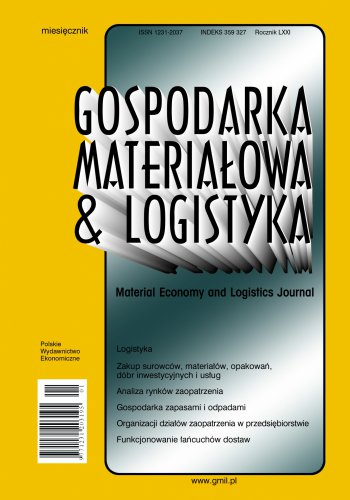Istota i znaczenie budowania relacji z klientem w modelu Vested
W ostatniej dekadzie outsourcing zmienił zasady gry na rynku, przyjmując znaczącą rolę w kształtowaniu relacji pomiędzy przedsiębiorstwami oraz ich modelami biznesowymi. Wartość usług outsourcingowych w Polsce w 2019 roku wyniosła 4 mld zł, a zatrudnienie w sektorze usług wspólnych przekroczyło 170 tys. osób. Delegowanie niekluczowych funkcji działalności przedsiębiorstwa na dobre zakorzeniło się w naszej gospodarce. Celem artykułu jest przegląd obecnie stosowanych koncepcji budowania relacji na rynku oraz przedstawienie możliwości wykorzystania kontraktu Vested jako narzędzia do transformacji relacji biznesowych.
Bibliografia
Bibliografia/References
Literatura/Literature
Alaranta, M., Henningson, S. (2008). An approach to analysing and planning post-merger IS integration: insights from two field studies. Information Systems Frontiers, 10, 307–319. https: //doi.org/10.1007/s10796-008-9079-2
Baraldi, E., Gresetvold, E., Harrison, D. (2012). Resource interaction in inter-organizational networks: foundations, comparison, and a research agenda. Journal of Business Research, 65 (2), 266–267. https://doi.org/10.1016/j.jbusres.2011.05.030
Bekier, M., Bogardus, A. J., Oldham, T. (2001). Why mergers fail. McKinsey Quarterly, 4, 6–10.
Biblier, R. (1989). The Arthur Young management guide to mergers and acquisitions. New York: Wiley.
Bizzi, L., Langley, A. (2012). Studying processes in and around networks. Industrial Marketing Management, 41 (2), 215–223. https://doi.org/10.1016/j.indmarman.2012.01.007
Capgemini Consulting (2016). Third Party Logistics Study, The state of Logistics Outsourcing. http://www.3plstudy.com/ (1.05.2020).
Ellram, L. M. (1996). The use of the case study method in logistics research, Journal of Business Logistics, 17 (2), 93–138.
Emerson, R. (1962). Power-dependence Relations. American Sociological Review, 27 (1), 31–41.
Etzkowitz, H. (2002). MIT and the Rise of Entrepreneurial Science. London: Routledge.
Fawcett, S. E., Mangan, G. M., McCarter, M. W. (2008). Benefits, barriers, and bridges to effective supply chain management. Supply Chain Management: An International Journal, 13 (1), 35–48. https://doi.org/10.1108/13598540810850300
Ford, D., Mattson, L. -G., Snehota, I. (2017). Management in The Interactive Business World, W: H. Hakansson, I. Snehota (ed.), No Business is an Island. Binley: Emerald Publishing. https://doi.org/10.1108/9781787145498
Keith, B., Vitasek, K., Manrodt, K., Kling, J. (2015). Strategic sourcing in the new economy: harnessing the potential of sourcing business models for modern procurement. Springer. https://doi.org/10.1007/978-1-137-55220-4_8
KornFerry 2016, The 20th Annual, 2016 Third-Party Logistics Study. https://www.kornferry.com/insights/articles/the-20th-annual-2016-third-party-logistics-study.
Niedzielski, P., Rzempała, A. (2000). Outsoursing jako element konkurencji na rynku transportowym (na przykładzie Z. CH. Police), materiały Ogólnopolskiej Konferencji Naukowej EKTRA 2000 „Strategie konkurowania na rynku transportowym”, Szczecin.
Strony internetowe/Websites
http://www.firma.egospodarka.pl/157264,Outsourcing-na-polskim-rynku-20-lat-doswiadczen-dobre-prognozy-na-przyszlosc,1,11,1.html (1.07.2020).
https://www.efficientplantmag.com/2012/06/the-rolls-royce-of-effective-performance-based-collaboration/

